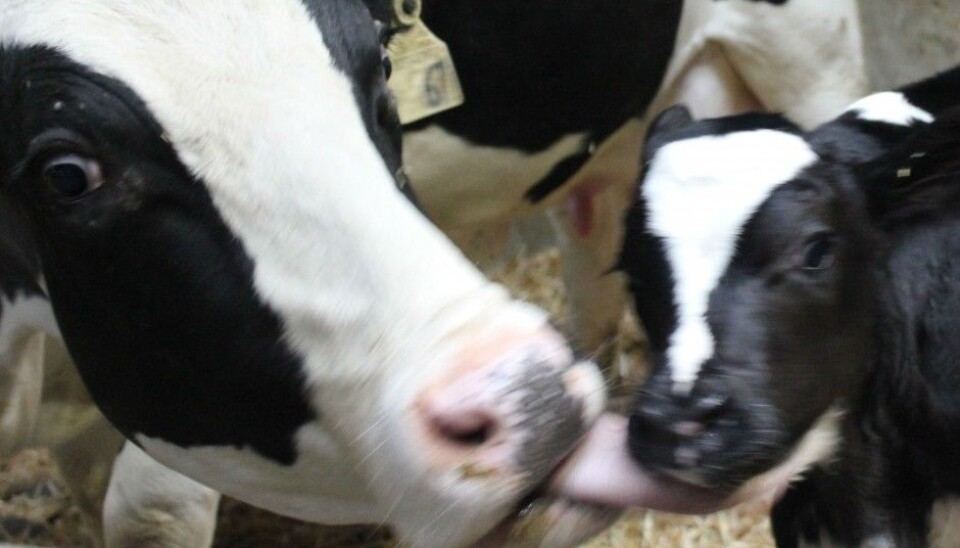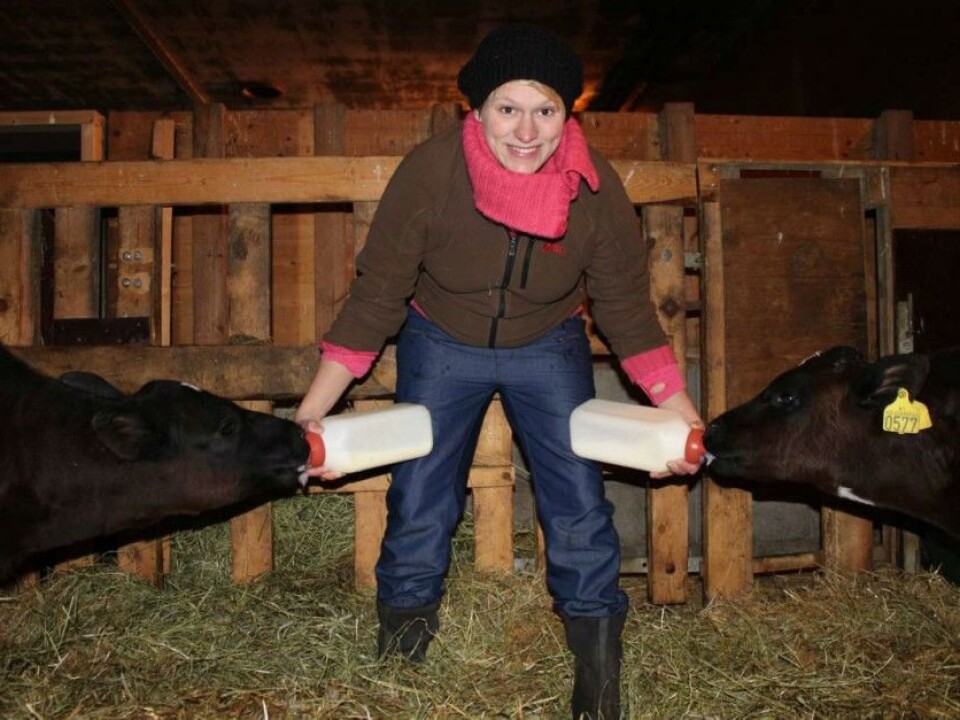
Calves need more motherly care
Calves are usually separated from cows right after birth. A new study indicates that they should get more time with their mothers.
Denne artikkelen er over ti år gammel og kan inneholde utdatert informasjon.
“Hey diddle diddle, the cat and the fiddle, the cow jumped over the moon,
the little dog laughed, to see such sport, and the dish ran off with the spoon.”
Routines at modern dairy and beef producing farms – even organic ones – give little opportunity for such whimsical pursuits as in the 18th century English nursery rhyme. But in recent years stronger emphasis in Norwegian animal husbandry has been put on the welfare of the animals that make our meals.
Dairy farms usually separate calves from their mothers at birth. A new Norwegian study shows that it is best for all involved if the animals are allowed to stay together in the same stall – but within a few days it should only be at night.
At least three days
Veterinarian and Research Fellow Julie Føske Johnsen has recently completed a study of the relationship between dairy cows and their calves.

Calves that are split from their mothers at birth are fed from bottles, buckets and automatic feeders.
At organic farms the calves get to spend at least the first three days with their mothers.
“The calf puts on more weight daily when its mother is allowed to suckle it. This is a strong indication of animal well-being,” says Johnsen.
Around 20 percent of the organic farms in Johnsen’s study allowed the calf to stay with its mother even longer, from one week up to three months.
Separation necessar
All dairy cows and their calves have to be separated at some stage, or the farmer loses money.
A cow produces about 30 litres of milk a day. When a calf gets to be a couple of months old it can drink half of that. So it becomes increasingly necessary as time passes for the dairy farmer to separate the two. To make ends meet, farmers have to get calves to eat feed.
But Johnsen says that both the cow and the calf react strongly to separation:
“Both begin to ‘moo’ a lot pace back and forth in their stalls. It can easily take three days for them to calm down.”
They will exhibit such anxiety whether they have been together three days or three months. They get a little more stressed, but not much more, if they have been together a longer time.
With that in mind, Johnsen thinks there is little reason not to separate cow and calf fairly early.
She found that they get less stressed when given a softer transition to single-life.
Half the time is best
“It’s worst when the calf loses access to milk and to its mother on the same day,” says Johnsen.
Her study shows that the animals fare best after a separation if they have only been together half a day at a time instead of round the clock.
“We saw that they reacted less strongly when they were finally separated permanently. Calves that spent half the time with their mothers also put on more weight afterward than calves that had been together with the mother cow night and day,” says Johnsen.
Their time together with mum was not just spent drinking milk. They also need care and contact.
Cuddling
The researcher says that mother and offspring spent a lot of quality time together even when a net was placed on udders so that the cows could not suckle the calves:
“They licked one another and shared affection.”
“This confirms that the relationship between mother and offspring involves much more than nourishment,” says Johnsen.
This is also why she thinks the animals should preferably live together as long as possible.
She suggests that they be allowed to spend the night in the same stalls and be separated during the day. This helps the calf learn to eat other food in the daytime.
----------------------------------------
Read the Norwegian version of this article at forskning.no
Translated by: Glenn Ostling






























